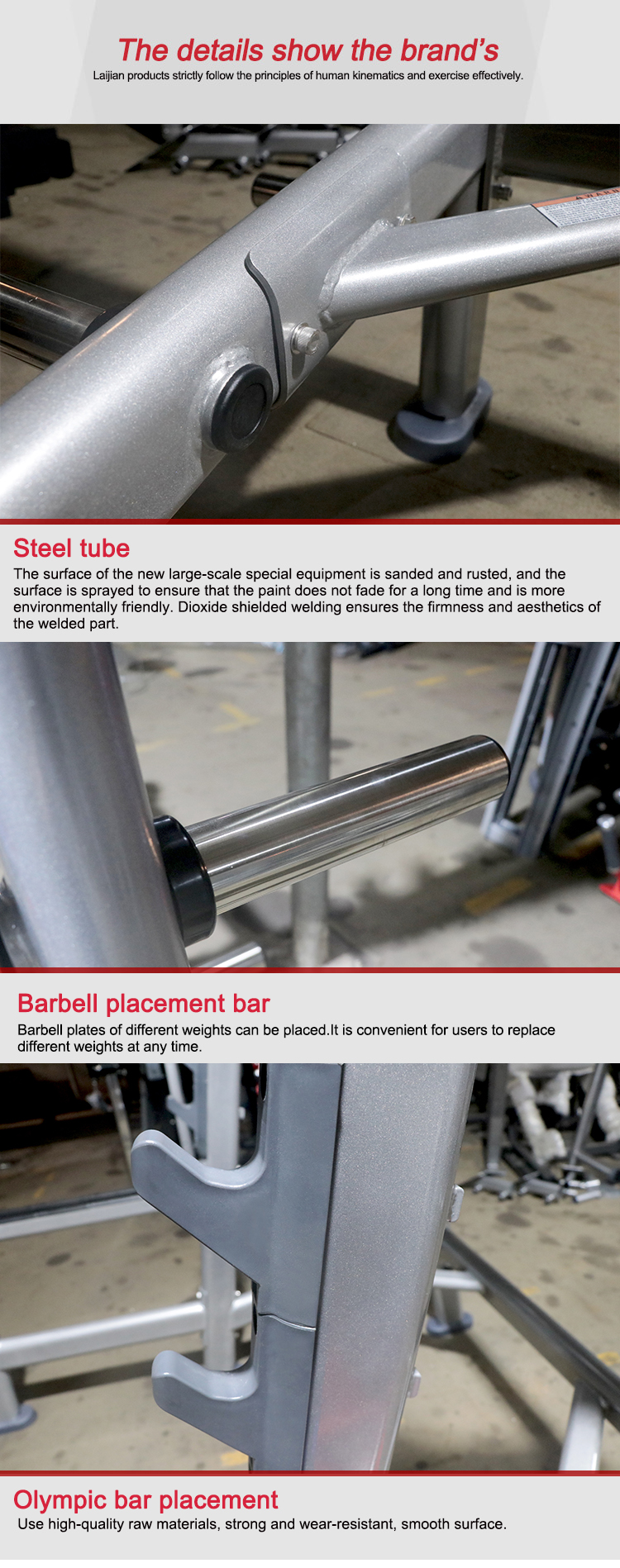Remember, the squat rack provides safety features such as the ability to catch the bar at different heights and a stable platform to land on. However, if you feel comfortable with the risks and have a spotter who understands how to assist you effectively, it's possible to squat safely without a rack. Always prioritize your safety and consider your personal fitness level and experience when deciding on your training methods.ls a squat rack enough for a home gym?
A squat rack, also known as a power rack or Olympic rack, can definitely be a valuable addition to a home gym. It provides a safe and effective way to perform a wide variety of exercises that target multiple muscle groups in your body, including squats, bench presses, deadlifts, overhead presses, and more.
However, whether a squat rack is enough for your home gym depends on your fitness goals, the space you have available, and what other equipment you might need or want. Here are some factors to consider:
1. **Space**: A squat rack takes up quite a bit of space, so ensure you have enough room to accommodate it along with any other equipment you plan to use. You'll need clearance above the rack for overhead movements and space around it for approaching and moving away from it safely.
2. **Equipment needs**: While a squat rack can handle a lot of exercises, you may still want to consider additional equipment like barbells, dumbbells, resistance bands, or kettlebells. These can provide more variety and allow you to target different muscles or perform different types of workouts.
3. **Budget**: Squat racks can range widely in price, from basic models to more expensive ones with additional features like pull-up bars, spotting platforms, or weight storage. Consider your budget and how much you're willing to spend on your home gym setup.
4. **Goals**: If your primary focus is strength training and you aim to build a solid foundation in weightlifting, a squat rack might be sufficient. However, if you're interested in cardio, flexibility, or other aspects of fitness, you might want to include additional equipment.
5. **Personal preference**: Some people prefer a minimalist setup, while others enjoy having a full array of equipment. Think about your personal preferences and how often you'd realistically use each piece of equipment.
In summary, a squat rack is a versatile piece of equipment that can serve as the centerpiece of a home gym, providing a safe environment for performing a wide range of exercises. However, to fully equip a home gym, you might need to add supplementary items based on your specific needs and goals.Does squat rack grow glutes?
Yes, squats can definitely help in building and toning your glutes (butt muscles). Squats engage the gluteus maximus, as well as other major muscle groups like quadriceps, hamstrings, and core muscles. The effectiveness of squats for glute growth depends on several factors including the intensity of the workout, your diet, your current fitness level, and how frequently you perform squats.
Here are a few types of squats that specifically target your glutes:
1. **Barbell Back Squats**: This is the traditional squat where you hold a barbell across your shoulders while squatting down and back up. It's an effective exercise because it allows you to lift heavy weights which can lead to significant muscle growth.
2. **Front Squats**: In this variation, you hold the barbell in front of you at shoulder height. This puts more emphasis on the upper body and shoulders but still effectively engages your glutes.
3. **Sumo Squats**: With wider feet positioned outside of your shoulders, this squat focuses more on the outer thighs and glutes, providing a different angle of attack than the standard back squat.
4. **Goblet Squats**: Holding a weight close to your chest, this squat helps isolate the glutes and quads, making it a good choice if you're just starting out or want a less intense option.
5. **Split Squats**: This unilateral movement targets each leg individually, which can also help in isolating and growing your glutes.
6. ** Bulgarian Split Squats**: Similar to split squats, but with one foot elevated on a bench or step, this exercise primarily works the glutes and hamstrings.
Remember, consistency and proper form are crucial when performing squats. Also, ensure you have adequate rest days between workouts to allow your muscles to recover. Combining squats with a balanced diet rich in protein can also enhance muscle growth. Always consult with a fitness professional before starting any new workout routine, especially if you are new to exercising or have any health concerns.



